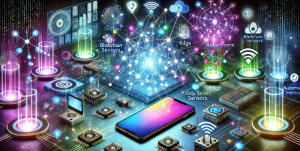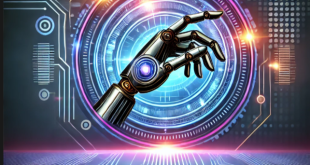The Emergence of Distributed AI

As such, the extent of domination of AI in every fibre of life-from virtual assistants to self-driven cars-makes centralization in these systems worrying and raises questions about data privacy, security, and resilience. Distributed or decentralized AI is a new paradigm for bypassing these problems by providing a stronger AI than that dependent on any single centralized entity.
What is Distributed AI?
Decentralized AI is the development and distribution of artificial intelligence in various locations, systems, or devices. It does not rely on cloud-based data centers that the traditional, centralized AI depends on. Instead, it really operates by spreading the workload across a network of interconnected devices, each processing its own amount of data, and adding up to the overall intelligence of the network, improving efficiency and securing data.
Low Latency and Responsiveness
Decentralized AI brings computation closer to where it is needed, avoiding latency in the transmission of data to a central place. It can make all the difference for applications that require real-time performance like autonomous vehicles and industrial control applications.
Scalability and Cost Savings
Decentralized systems are intrinsically scalable because they exploit the existing hardware infrastructure of connected devices; they avoid expensive, centralized servers. This in turn makes AI accessible to more organizations and brings down costs operationally quite massively.
Technologies Enabling Decentralized AI
Federated Learning
This approach allows the training of models on decentralized devices using local samples of data and never leave their host device. Companies like Google have already experimented with federation to great success for the personalization of mobile devices for applications in predictive text and health monitoring.
Blockchain and Smart Contracts
One of the aspects blockchain provides is a secure and transparent ledger for AI models. This guarantees data integrity while bringing about trust among the devices participating. In smart contracts, agreements and functions can be automated inside the decentralized network to ensure security as well as compliance with regulations.
Edge AI
Edge AI pushes computation onto the edge devices for such applications as smartphones, IoT sensors, or even an autonomous drone. This does reduce the overall data to be sent to a central server, and therefore allows AI applications even on remote or connectivity-limited grounds.
Challenges and Considerations
Data Synchronization and Model Consistency
Of course, in a decentralized AI setup, data consistency across devices can be difficult. A good example is federated learning: this necessitates complex algorithms for model updates from different sources without conflict.
Energy Efficiency and Device Limitations
Decentralized AI applications require energy-efficient processors to execute computations without draining power from the device. In fact, hardware has improved this, though to achieve sustainable energy efficiency is difficult, especially for IoT and mobile devices.
Security and Regulatory Compliance
While decentralized AI can be more secure, the very nature of the distribution means that there are special problems with a decentralized system.
Applications of Decentralized AI
Smart Cities
Decentralized AI may also be used for smart cities as power by analytics of real-time data from distributed sensors. Traffic lights, surveillance cameras, and public services could work more efficiently, responding right away to information from their local environment without necessarily having constant connection to the central server.
Healthcare and Telemedicine
Use decentralized AI to monitor and diagnose in real time on the patient device with direct data privacy preservation and excellent response time in critical care situations. For example, mobile health data may be analyzed directly to alert healthcare providers immediately of any anomalies identified.
Self-Driving Vehicles and IoT
However, an autonomous vehicle can determine a course of action in a split second using an on-device AI, so the need for a central network becomes lesser and lesser .
The Future of Decentralized Intelligence
Growing involvement of edge computing, federated learning, and blockchain makes the landscape of AI more decentralized. Decentralized intelligence will fundamentally change the face of AI toward more security, responsiveness, and accessibility in a network of intelligent devices if it continues to develop.
